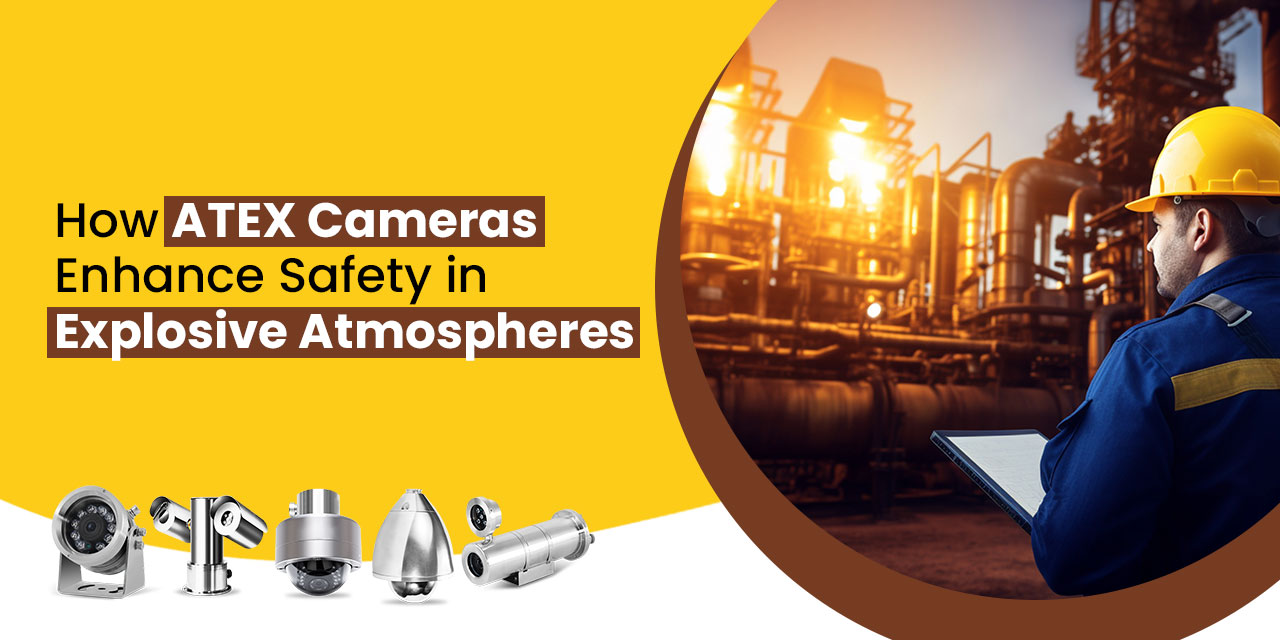
ATEX cameras are specialized devices designed to function safely in environments where there is a risk of explosions. The term “ATEX” is derived from the French “ATmosphères EXplosibles,” referring to the EU directives that regulate equipment intended for use in hazardous locations. These cameras are critical for monitoring and ensuring safety in environments where explosive gases, vapors, or combustible dust are present.
What Makes ATEX Cameras Unique?
Explosion-Proof Design
The explosion-proof design is the hallmark of ATEX cameras. They are constructed with robust casings that can contain any internal explosions, preventing sparks or heat from escaping into the surrounding environment. This design ensures that even in the event of a malfunction, the camera won’t ignite the hazardous atmosphere.
Durability and Reliability
ATEX cameras are built to withstand harsh environmental conditions. They are resistant to extreme temperatures, moisture, dust, and corrosive substances. This durability ensures that the cameras can operate continuously without failure, providing reliable surveillance in the most demanding settings.
Advanced Imaging Technology
Many ATEX cameras are equipped with advanced imaging technology such as infrared (IR) sensors, thermal imaging, and high-resolution lenses. These features allow the cameras to capture clear footage even in low-light or obscured conditions, which is crucial for maintaining visibility in hazardous areas.
Where Are ATEX Cameras Used?
Oil and Gas Industry
In the oil and gas industry, the risk of explosions due to volatile gases is a constant concern. ATEX cameras are deployed to monitor key processes such as drilling, refining, and pipeline transportation. They provide real-time footage, enabling operators to detect and respond to potential hazards swiftly.
Chemical Plants
Chemical plants deal with a wide range of volatile substances that can form explosive atmospheres. ATEX cameras play a vital role in maintaining safety by providing continuous monitoring of production lines, storage tanks, and sensitive areas, ensuring that any anomalies are quickly identified and addressed.
Mining Operations
Mining operations often generate combustible dust, which can lead to explosive situations if not properly managed. ATEX cameras are used to monitor critical areas such as tunnels, conveyors, and processing plants. They help in detecting unsafe conditions and ensuring compliance with safety protocols.
Pharmaceutical Facilities
Certain pharmaceutical processes involve flammable solvents and powders. ATEX cameras help in maintaining a safe production environment by monitoring these processes and ensuring that safety standards are upheld. This is especially important for protecting both workers and sensitive equipment.
Why Use ATEX Cameras?
Enhanced Safety
The primary advantage of ATEX cameras is their ability to operate safely in explosive atmospheres. By providing constant surveillance, they help in the early detection of hazardous conditions, reducing the likelihood of accidents and ensuring the safety of personnel and equipment.
Regulatory Compliance
Industries operating in hazardous environments must comply with strict safety regulations. Using ATEX-certified cameras helps businesses meet these regulatory requirements, avoiding potential fines and ensuring that safety standards are maintained.
Operational Efficiency
ATEX cameras enhance operational efficiency by providing clear and continuous visual monitoring. They enable quick identification of issues, allowing for prompt corrective actions. This not only minimizes downtime but also improves overall productivity.
Cost-Effective Risk Management
While the initial investment in ATEX cameras may be higher than standard cameras, they offer significant long-term savings. By preventing accidents and ensuring smooth operations, these cameras reduce the costs associated with equipment damage, production halts, and regulatory penalties.
Types of ATEX Cameras
Explosion Proof Mini IR Camera
This compact camera is designed for small, confined spaces where visibility is limited. It utilizes infrared technology to capture clear images even in total darkness, making it ideal for monitoring areas such as storage tanks and tight production spaces.
Explosion Proof PTZ Camera With IR
This camera combines pan, tilt, and zoom capabilities with infrared imaging, offering comprehensive surveillance. It allows operators to remotely control the camera’s focus, making it perfect for covering large areas or focusing on specific points of interest.
Explosion Proof Fixed Type Dome Camera
Fixed type dome cameras are ideal for areas that require constant monitoring. Their explosion-proof casing and discreet design make them suitable for installation in various hazardous zones, providing reliable surveillance without drawing attention.
Explosion Proof PTZ Type Dome Camera
This type of camera offers the best of both worlds: the flexibility of PTZ functions and the sturdy design of a dome camera. It is suitable for dynamic environments where there is a need for both broad coverage and detailed inspection.
Explosion Proof ZOOM IR Camera
Equipped with powerful zoom and infrared capabilities, this camera is designed for detailed inspection of distant or low-visibility areas. It is particularly useful in monitoring large industrial facilities where pinpoint accuracy is required.
Conclusion
ATEX cameras are an essential component of safety systems in industries prone to explosive risks. Their robust design, advanced technology, and compliance with safety standards make them invaluable for monitoring and protecting hazardous environments. By investing in ATEX cameras, companies can enhance safety, ensure regulatory compliance, and improve operational efficiency, ultimately safeguarding both their workforce and their assets. Enhance safety in hazardous areas with the right ATEX camera. Contact our expert today!







